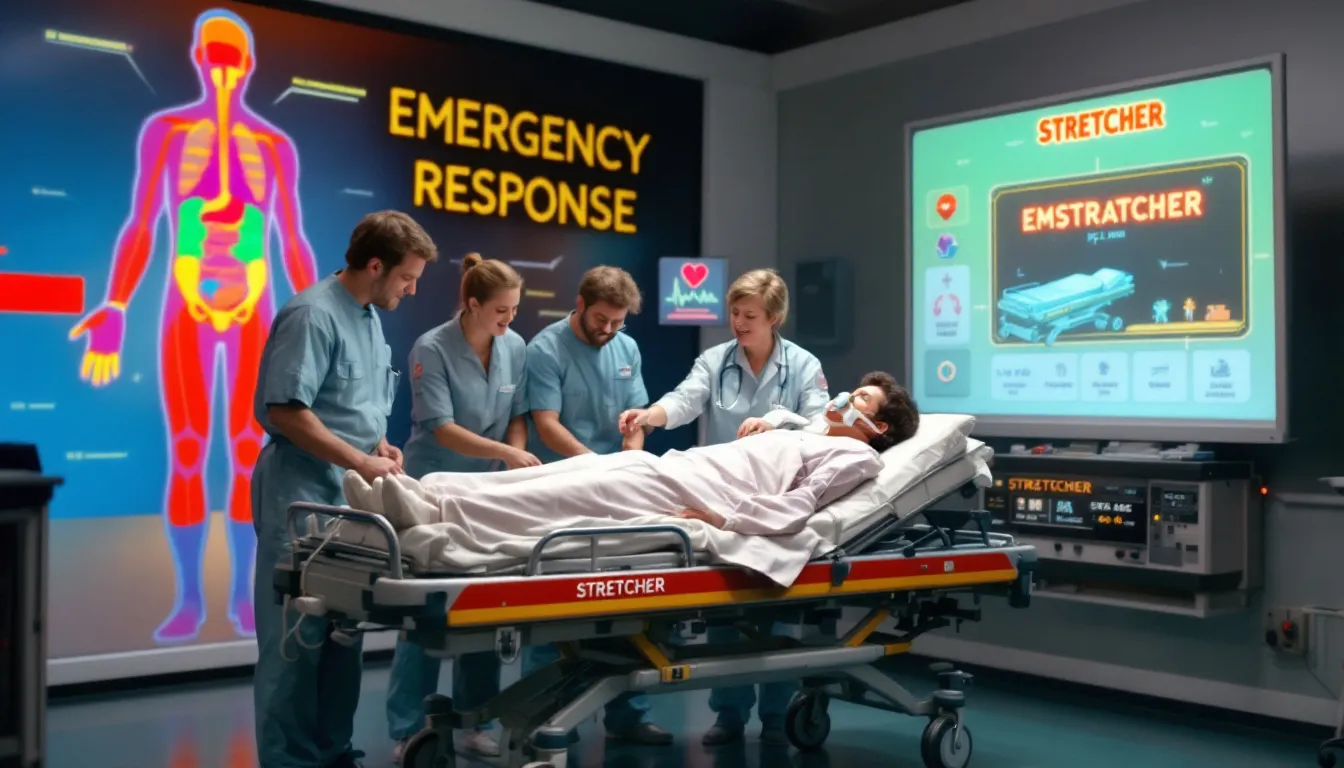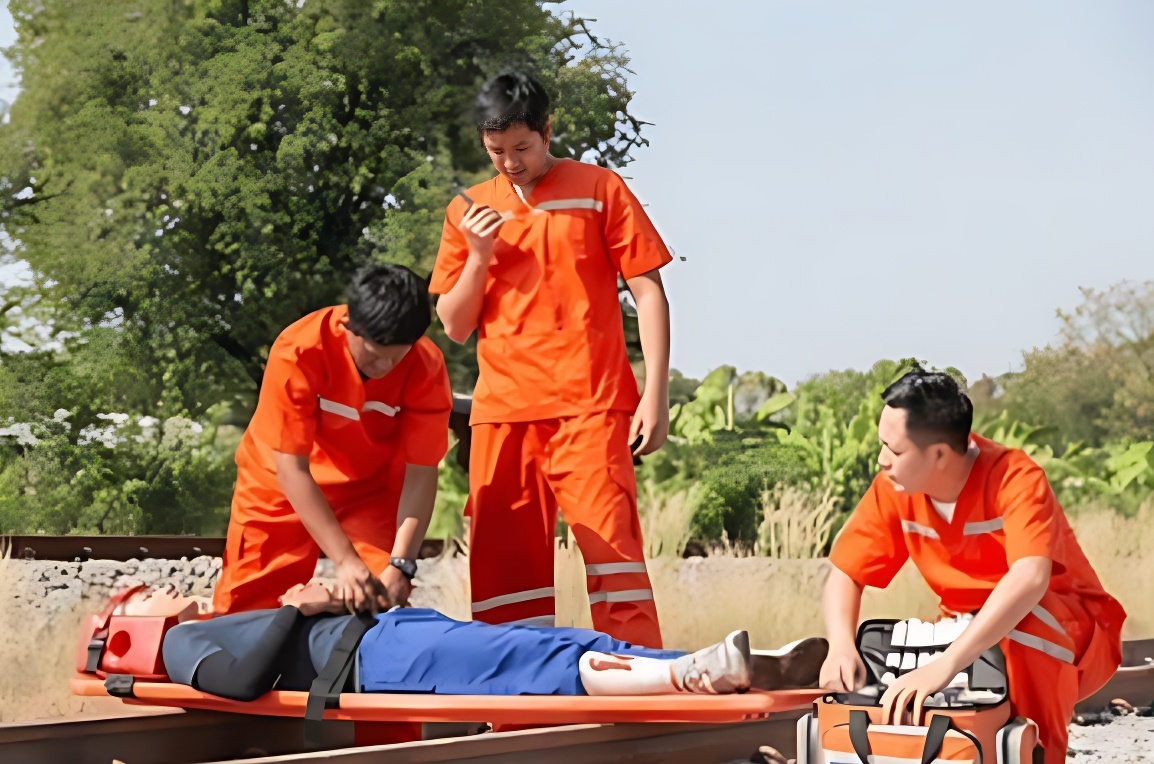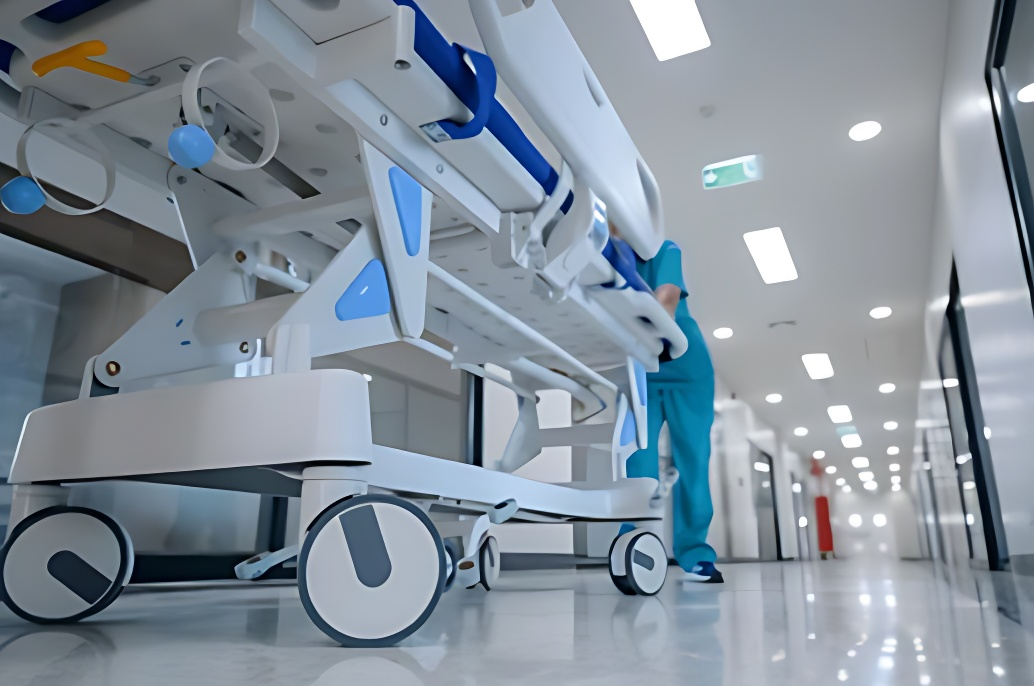A stretcher is a vital medical equipment used in emergency situations by medical personnel. The purpose of this equipment is to transport patients safely from one place to another. It is designed for easy, efficient patient movement in hospitals, ambulances, and rescue operations. This article will provide you a complete guide to medical stretchers. It will explain “what is a stretcher“, discuss the various types, and highlight their key features.
Key Takeaways
- Stretchers are critical for patient transportation in emergencies, offering various types that cater to specific medical needs and environments.
- Modern stretchers incorporate advanced safety features, ergonomic designs, and innovative materials to enhance patient comfort and ensure safe transport.
- For effective use of stretchers you must keep the following things in mind: Proper maintenance, regular cleaning, and selection of the appropriate stretcher type.
Defining a Stretcher

A stretcher is an essential piece of equipment for moving patients, used as a transportation platform in healthcare settings. It typically consists of a flat, sturdy surface made of metal or durable synthetic materials, often with padding for patient comfort. On this surface, the patient is carefully placed and is carried by the medical personnel.
Are Stretchers and Gurneys the same thing? Stretchers are often confused with Gurneys. However, they are different equipments that have specific purposes. While gurneys are fitted with wheels, stretchers are designed to be portable. Because of this portability, stretchers are ideal for emergency situations such as battlefields and search-and-rescue operations. However, gurneys are mostly prefered for inside-hospital transport.
Development of Modern Stretchers
With advancement in technology, the need medical industry is also revolutionising and evolving itself. This trend is also visible in strecthers. The development of modern stretchers has been driven by several factors, including the need for neck stability, sturdy strapping, and ease of loading into ambulances.
These features ensure that patients are transported safely and comfortably, minimizing the risk of further injury during transit. In this regard, the Red Cross has prominently contributed for financing the development of the earliest modern ambulance stretcher. This innovation marked a significant advancement in medical transport.
A stretcher is not just a piece of medical equipment but a lifeline ensuring timely care for patients. Now, let’s explore the different types available and their specific uses.
Types of Medical Stretchers
Stretchers come in various forms, each designed to meet specific needs in different medical settings. The most common division of stretchers is based on the level of partability offered. This classification results in two basic types of stretchers: Wheeled, Portable and Flexible Stretchers. Each type offers unique benefits suited to specific environments and patient needs. Below are the specifics of these stretcher types and their applications.
Wheeled Stretchers
Wheeled stretchers are mostly used for moving patients in between hospital departments and ambulances. With large wheels for smooth movement, side rails for safety, and the ability to support significant weight, they provide secure and comfortable transit.
One of the key features of wheeled stretchers is their robust safety mechanisms. These include secure strapping and locking mechanisms to prevent accidents during patient movement. Furthermore, adjustable height mechanisms allow caregivers to position patients comfortably for various procedures. Paramedics and hospital staff rely on these safety features to ensure that patients remain stable, even during rough transport.
Portable Stretchers
Portable stretcher is a basic type of stretcher that is typically carried by multiple individuals, allowing for rapid deployment in emergency situations. These are crucial in scenarios where quick and easy movement is necessary, such as during natural disasters or in remote locations.
They are particularly useful where traditional wheeled stretchers are impractical, such as in confined spaces, crowded areas or rugged terrains. Their compact, foldable designs allow for easier storage and navigation in congested environments. Portable medical stretchers are indispensable tools for paramedics and rescue teams who often operate in unpredictable and demanding environments.
Flexible Stretchers
Flexible stretchers excel in tight spaces, enabling patient transport where rigid devices fail. Their lightweight, adaptable nature makes them ideal for emergency medical services that require quick, versatile responses.
Flexible stretchers can conform to different patient shapes and sizes, ensuring secure transport without compromising safety or comfort. This adaptability is particularly beneficial in complex rescue operations, where traditional stretchers might lack the necessary support and flexibility.
Features and Design of Modern Stretchers
Modern stretchers use innovative designs and new features to enhance patient safety and comfort during transport. New designs include adjustable backrests and cushioned surfaces. These ergonomic enhancements ensure patients remain comfortable and secure, even during extended transport. This protects them from further injury and makes their recovery smooth.
With respect to safety, modern stretcher design includes advanced braking systems and adjustable straps to secure patients during transport. This prevents accidents and ensures stability. Infection control is prioritized with easy-to-clean materials and innovations like antimicrobial coatings to reduce germ spread.
Modern stretchers are made up of lightweight yet durable materials, for example aluminum alloys so that the medical caregivers can carry it with less effort and reduce fatigue cased during transport. It also protects them from injury risks. Hydraulic and electric lift systems enable easy adjustments, improving operational efficiency. These features collectively make modern stretchers functional and reliable in medical settings.
Manufacturing Processes of Stretchers
Manufacturing process of stretchers involve advanced materials and techniques to ensure safety and performance. Polypropylene is often chosen for its cost-effectiveness and versatility, making it ideal for various stretcher components. Neoprene is also used for its durability and cushioning properties.
Manufacturing can involve creating preforms through injection molding, then shaping them into the final stretcher design. Techniques like blow molding ensure consistent wall thickness and meet safety standards. Infection control features like antimicrobial coatings and non-porous surfaces are integrated into stretchers to promote hygiene and reduce contamination risks. These meticulous processes ensure each stretcher meets stringent quality and safety requirements.
Importance of Stretchers in Emergency Medical Services (EMS)

Stretchers are predominantly used in emergency medical services (EMS), ensuring the safe transport of individuals needing medical attention. The right type of stretcher can significantly impact patient outcomes. Incorporating safety measures like security straps improves overall patient care.
For this purpose, the design of a stretcher aims to meet the requirements of emergent medical care. For instance, power loading systems enhance operational efficiency and reduce strain on personnel, benefiting patient care. Flexible stretchers, like Reeves sleeves, are crucial for maneuvering patients through tight areas without compromising safety.
Some stretchers have integrated monitoring systems that track vital signs and relay information. These advanced features ensure EMS personnel can provide timely and effective care, making stretchers indispensable in emergency medical services.
Safety Considerations When Using Stretchers

Just like any other aspect of medical care, patient safety is paramount during patient transport. Stretchers provide a stable platform, minimizing movement that could exacerbate injuries. However, in unfortunate instances, improper safety protocols can result in patient falls that can cause unnecessary conplications in treatment. This is why, using security straps on stretchers is crucial for preventing.
Properly secured patients are less likely to sustain injuries, which is particularly important for vulnerable populations like the elderly. Enhanced safety features include locking wheels and adjustable straps to prevent unwanted movement during transport. Specialized straps, like surgical straps, help maintain patient positioning during complex procedures.
Innovations in Stretcher Technology

Recent advancements in stretcher technology have significantly improved patient transportation. Many modern stretchers are equipped with hydraulic and electric assist systems for easy height adjustments requiring minimal physical effort from healthcare staff. These systems enhance operational efficiency and reduce physical strain on medical personnel.
Certain stretcher models have integrated technology to monitor vital signs and share data directly with medical facilities, allowing patients to improve preparedness for incoming patients. This innovation ensures medical care teams are better equipped to provide timely and effective care upon the patient’s arrival. Joseph Bomgardner’s invention of the four-swivel-wheel stretcher has enhanced maneuverability and safety, contributing to the evolution of stretcher technology.
Maintenance and Cleaning of Stretchers
Proper maintenance and cleaning of stretchers are essential not only for functionality but also for patient hygiene. Regular cleaning is crucial to prevent germ buildup, which can pose health risks to patients and medical personnel. Routine maintenance includes inspections, cleaning, and lubrication to keep the stretcher in optimal condition.
Cleaning should involve removing any accessories like straps or pillows before starting. A mixture of mild detergent and water is recommended, followed by a disinfectant to effectively eliminate germs. Keeping stretchers clean and well-maintained is vital for providing safe and effective patient care.
Choosing the Right Stretcher for Your Needs
Selecting the appropriate stretcher impacts the efficiency of EMS and patient outcomes. Some stretchers offer modular designs for customization with various accessories, adapting to specific patient needs during emergencies. Stretchers with adjustable height and backrests facilitate better patient positioning and transfer.
Customization options for stretchers include integrated IV poles and attachments for medical equipment. These options are available in special types of stretchers
- Manual stretchers are cost-effective but require physical effort to operate, while powered stretchers reduce strain on EMS personnel.
- Bariatric stretchers, designed for heavier patients, have reinforced structures for safety and comfort.
Summary
In summary, medical stretchers are indispensable tools in healthcare, providing safe and efficient patient transportation. Understanding the different types of stretchers, their features, manufacturing processes, and safety considerations is crucial for selecting the right stretcher for your needs.
Advances in stretcher technology continue to enhance patient care and operational efficiency, making these devices even more valuable in medical settings. By staying informed about the latest innovations and best practices, healthcare providers can ensure that they are equipped to deliver the highest quality care to their patients.
Explore our comprehensive range of stretchers at Jiekang. From ambulance stretchers to folding and vacuum stretchers, we provide professional-grade equipment you can trust. Visit our website today to find the right stretcher for your needs and ensure safe patient transport!
Frequently Asked Questions
What is a hospital stretcher called?
A hospital stretcher is commonly referred to as a gurney or trolley. These terms are often used interchangeably for apparatuses designed to transport patients in medical settings.
Why would someone need a stretcher?
A stretcher is essential for transporting individuals who cannot move on their own due to illness, injury, or disability, ensuring their comfort and safety during transport. It’s a critical tool for medical emergencies and effective patient care.
What does it mean when someone is on a stretcher in medical facilities?
When someone is on a stretcher, it typically means they are being transported because they are ill or injured and cannot move on their own. This device is used to carry individuals in a flat position for medical care.
What are the main types of stretchers used in medical settings?
The main types of stretchers used in medical settings are wheeled stretchers, portable stretchers, and flexible stretchers, each serving distinct purposes to enhance patient transport and care. Choosing the right type is crucial for ensuring safety and efficiency in emergencies.
How do wheeled stretchers enhance patient safety?
Wheeled stretchers enhance patient safety by providing secure strapping, locking mechanisms, and large wheels that ensure smooth transport, minimizing the risk of falls or injury. These features collectively promote a more secure and stable environment during patient handling.



